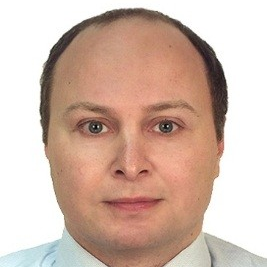Electrocatalysis for Low-Temperature Water Electrolysis
A special issue of Catalysts (ISSN 2073-4344). This special issue belongs to the section "Electrocatalysis".
Deadline for manuscript submissions: closed (31 December 2019) | Viewed by 4165
Special Issue Editor
Interests: proton exchange membrane water electrolysis; proton exchange membrane fuel cells; electrocatalysis
Special Issues, Collections and Topics in MDPI journals
Special Issue Information
Dear Colleagues,
Low-temperature water electrolysis is used in a number of industrial and power engineering applications for long decades. In recent years, interest in water electrolysis has steadily grown due to the application of the so-called hydrogen cycle (electrolysis system—hydrogen storage system—fuel cell system) for renewable and nuclear energy storage, and also the development of a hydrogen refueling stations network for fuel cell vehicles. The aim of this Special Issue is to highlight the topical issues of electrocatalysis applied to low-temperature water electrolyzers on the basis of proton- and anion-exchange membranes/diaphragms. In particular, aspects of the activity and stability of cathode and anode electrocatalysts on the basis of platinum and non-platinum group metals, molecular complexes, and so on will be considered. Original research articles and review papers dedicated to new disperse catalysts carriers and catalytically-activated electrode materials are expected as well. Special attention will be given to the development and tests of industrial-scale water electrolysis systems on the basis of innovative electrocatalytic materials.
Prof. Dr. Sergey Grigoriev
Guest Editor
Manuscript Submission Information
Manuscripts should be submitted online at www.mdpi.com by registering and logging in to this website. Once you are registered, click here to go to the submission form. Manuscripts can be submitted until the deadline. All submissions that pass pre-check are peer-reviewed. Accepted papers will be published continuously in the journal (as soon as accepted) and will be listed together on the special issue website. Research articles, review articles as well as short communications are invited. For planned papers, a title and short abstract (about 100 words) can be sent to the Editorial Office for announcement on this website.
Submitted manuscripts should not have been published previously, nor be under consideration for publication elsewhere (except conference proceedings papers). All manuscripts are thoroughly refereed through a single-blind peer-review process. A guide for authors and other relevant information for submission of manuscripts is available on the Instructions for Authors page. Catalysts is an international peer-reviewed open access monthly journal published by MDPI.
Please visit the Instructions for Authors page before submitting a manuscript. The Article Processing Charge (APC) for publication in this open access journal is 2700 CHF (Swiss Francs). Submitted papers should be well formatted and use good English. Authors may use MDPI's English editing service prior to publication or during author revisions.
Keywords
- Low-temperature water electrolysis
- Proton/anion exchange membrane
- Oxygen evolution reaction
- Hydrogen evolution reaction
- Electrode structure
- Catalyst degradation analysis and mechanisms
- Pt-group-metal (Pt, Pd, Ir, Rh, Os, and Ru) catalysts
- Non Pt-group-metal catalysts





